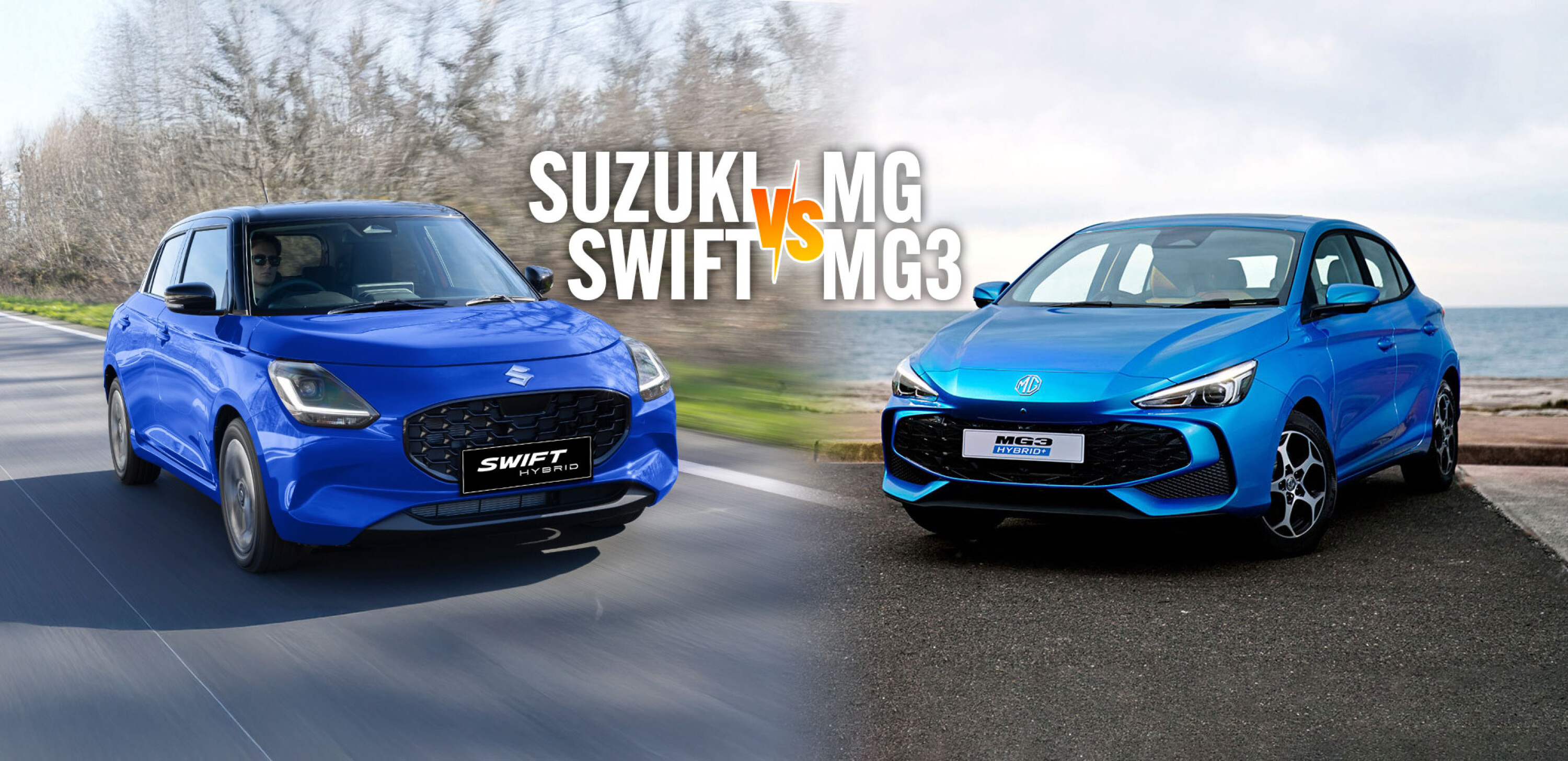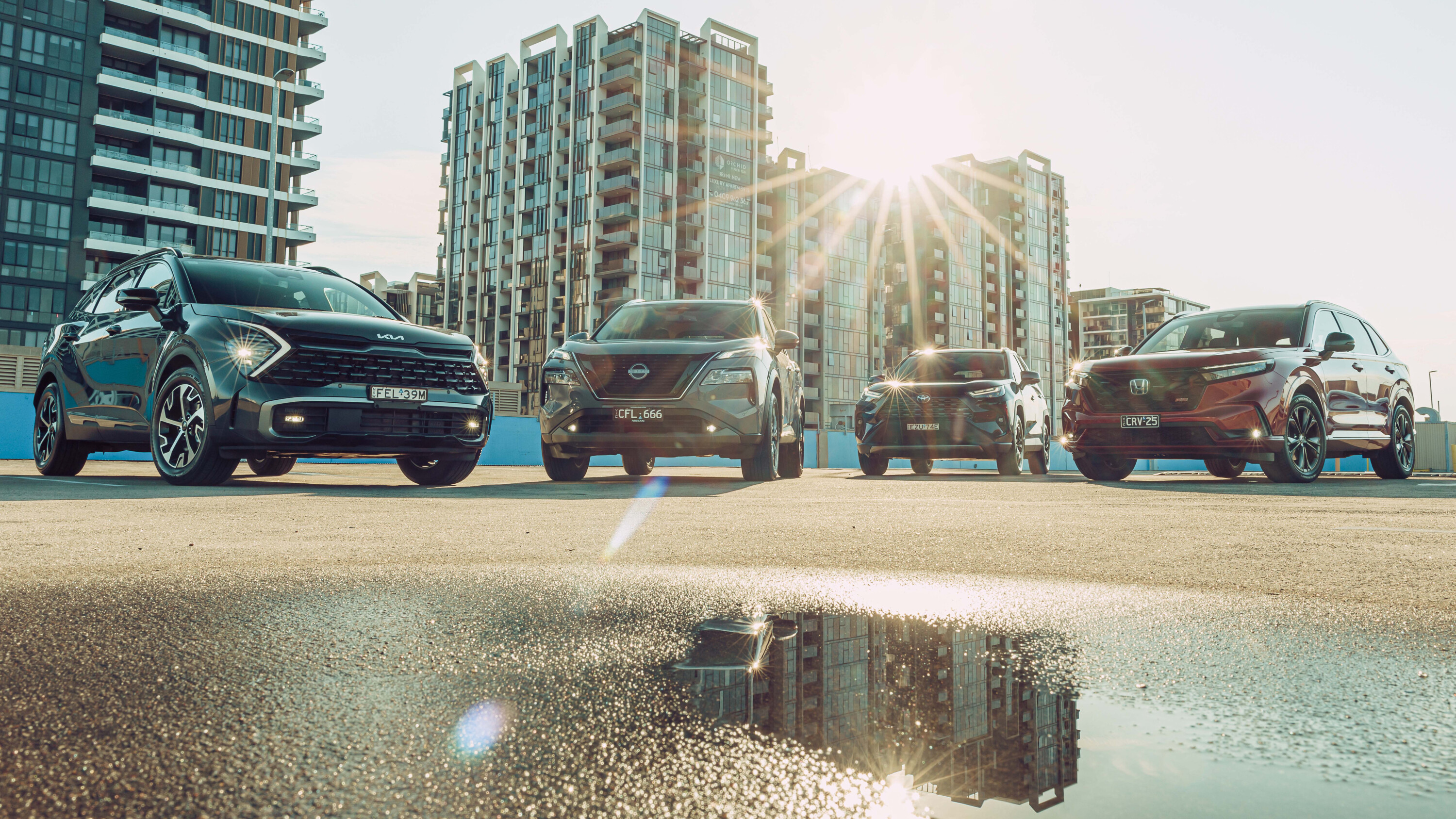t’s all very well for the likes of Peugeot to say that the requirements for a hot hatch have changed compared with the good old days of the 205 and 306 GTis, but there’s also such a thing as being too timid.
This feature was originally published in MOTOR’s March 2004 issue
By all means, give us the safety features, the refinement and the fruit, but not at the expense of that trace of hoon-mobile that used to make them so much fun. It was starting to look as if Peugeot had wimped out on us completely.
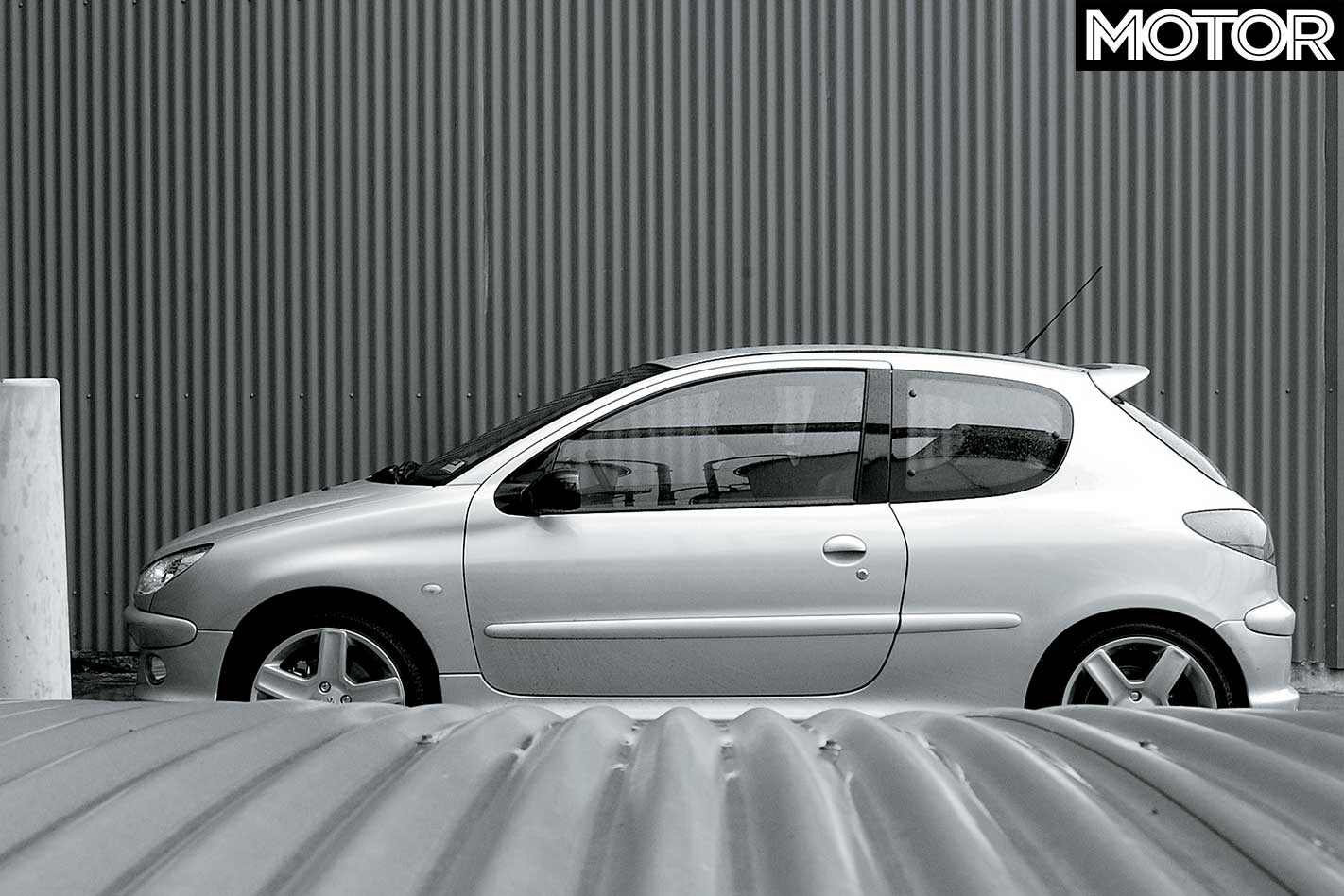
The chassis is crying out for more power to do it justice and much of its potential sparkle and fluency seems to have been smothered under layers of cotton wool. A pleasant enough car, then, but are we going to be talking about it fondly in 20 years’ time, like we still do with the 205 GTi 1.9? Doubtful.
If the regular 206 GTi was a stopgap measure, the new GTi 180 is the real deal. Responding to the call for more power is one thing, but what’s interesting to note is the subtly different character that’s bubbled its way to the surface now that some of the cotton wool has been ripped away. The GTi 180 is a brawny little thing that’s not to be tarred with the same brush as the soft-focus GTi.
On the face of it, the GTi 180’s closest rival is the Renault Clio Sport, which, after all, hails from the same rather oddball country and is tantalisingly close on price, performance and even character.

But we’ve already established that the Clio is not the one to beat in this class. That honour belongs to the Holden Astra SRi Turbo – the very same car that convincingly (if controversially) won the 2003 Bang For Your Bucks title (October 2003 issue), and an undeniably rapid and effective package for just $37,000.
The Astra also had little difficulty in seeing off the MINI Cooper S, Toyota Corolla Sportivo and Ford Focus ST170 in the last hot hatch comparo we did (August 2003 issue).
You could argue that the competition wasn’t all that strong on that occasion (although the MINI had its moments), but boy oh boy has the situation changed now that the hot 206 has lobbed in this country.
It’s a pretty little thing, the GTi 180, taking a step closer to the image of the soon-to-be-replaced WRC car with its deck spoiler on top of the tailgate and 17-inch alloys, their almost oversized proportions serving to emphasise how short the 206 seems. The GTi 180 also gets a pair of discreet exhaust outlets to further distinguish it from the boggo GTi.

Next to the Astra, though, the 206’s styling could almost be described as fussy. Simple of line and chunky of panel, the Astra is an undeniably handsome car, in a very Germanic sort of way, helped out by its 206-matching 17-inch alloys and a beefy wing that sprouts from the hatch’s short rear deck (neatly blocking the driver’s rearward vision, but worth it). Neither one has to resort to further obvious body add-ons in an attempt to make it look vaguely sporty.
The ‘180’ on the end of the 206’s name refers, of course, to its power output in PS (weird Japanese and French measurement), which translates as 130kW – up exactly 30kW on the regular 206 GTi.
It’s fundamentally the same 2.0-litre engine in both versions, but bolting on a specially machined head with a dual-mode intake manifold and variable valve timing not only does what’s necessary to lift power to a respectable level but also has quite an effect on the engine’s character.
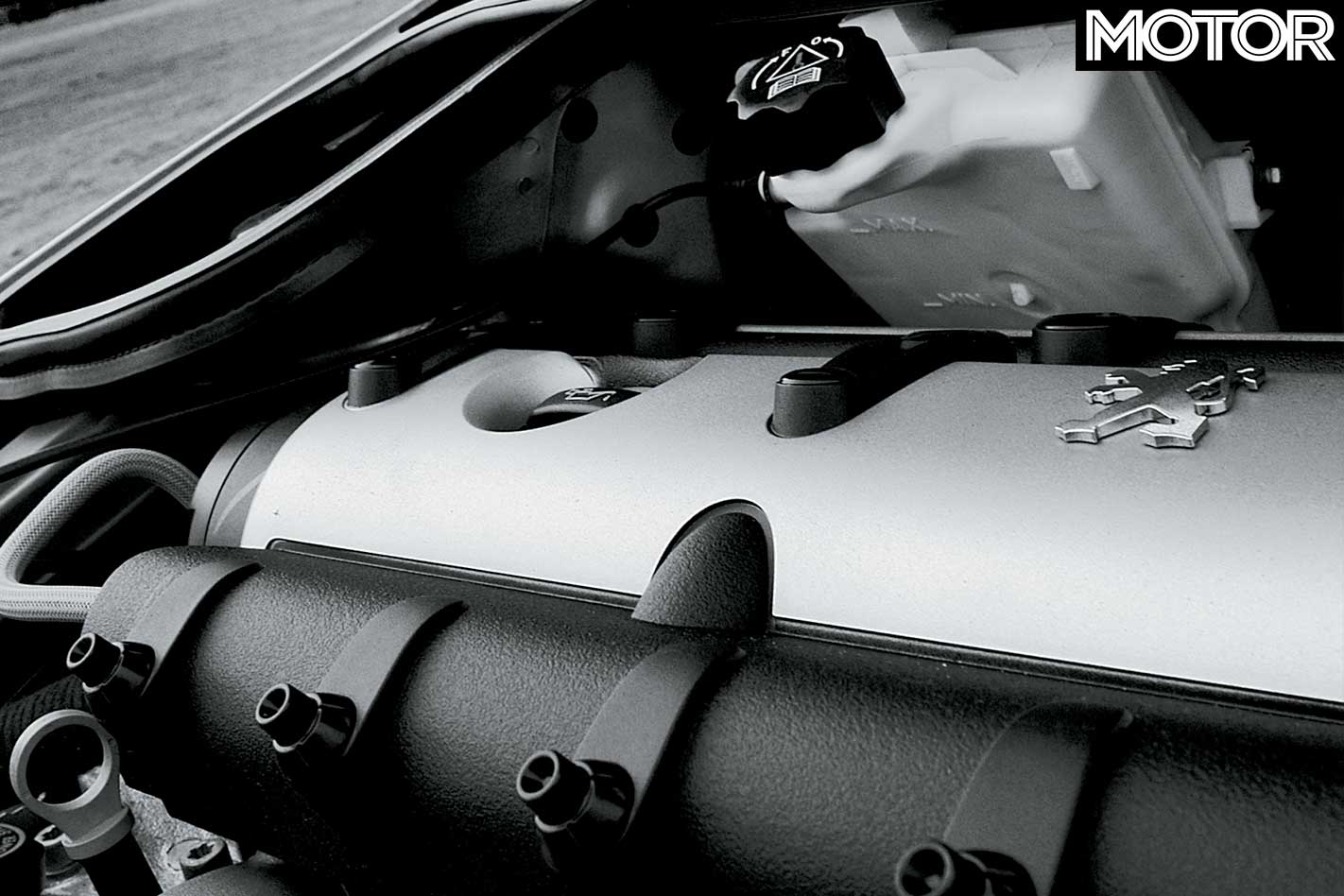
In typical Peugeot fashion, there’s plenty of torque to go around, too; even the lesser GTi’s got a handy 190Nm at 4100rpm, but the GTi 180 goes a step better with 202Nm at 4750.
It’s a feisty little engine, it really is, especially in the upper half of the rev range. Beyond 3000rpm it jumps like a startled gazelle at each prod of the throttle, building up to a lusty, vocal top end that all but dares you to take a bead on the 7300rpm redline.
Where the Astra has a typical turbo’s soft throttle response and does its best to isolate its driver from the power-delivery process, the Peugeot is just the opposite: urgent as a trip to the dunny after a vindaloo and connected like George Dubya and the American oil companies.
The Astra’s 2.0-litre turbocharged engine might not be as much of a rowdy showman as that of the 206, but its softly-softly approach is even more effective. Not only does it have a useful power advantage with its 147kW tally, but it makes peak torque of 250Nm at just 1950rpm, which means that it kicks hard from very low down in the rev range and is never far from a big, fat seam of torque.
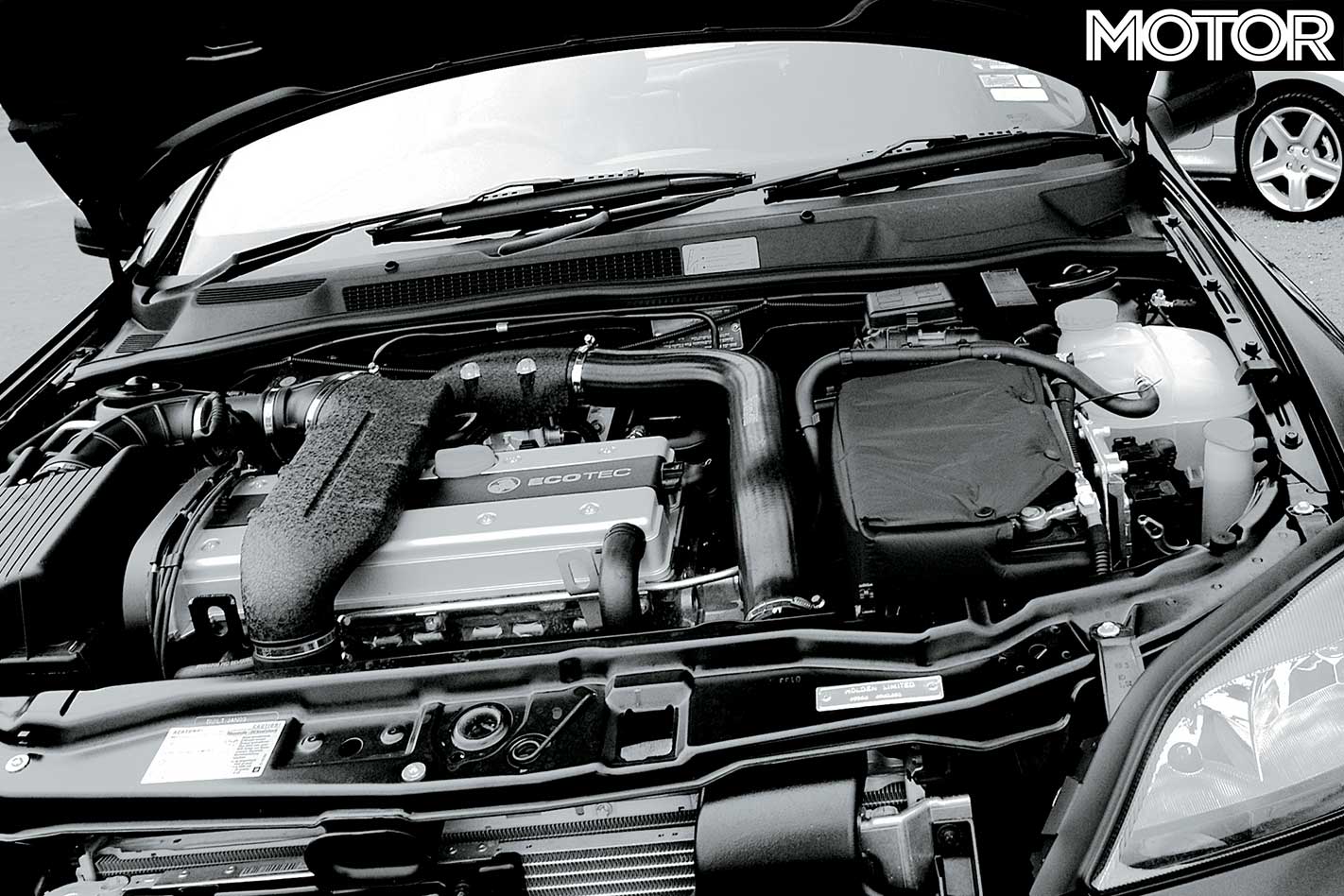
Its rev range is more limited than the 206’s and it can seem a bit flat as there’s no additional kick at the top end, but it doesn’t need it, so substantial is its mid-range performance.
Against the clock, the Astra uses that extra muscle to good effect, pipping the lighter 206 by half a second in the sprint from rest to 100km/h (7.2sec versus 7.7). The gap closes up by a single tenth over the standing 400 metres, the Astra requiring 15.2sec and the Peugeot 15.6sec.
In reality there’s not a whole lot in it; the difference is that the Astra makes it all seem completely effortless (apart from suffering more torque steer), whereas it’s more of a drama in the 206.
The Peugeot might have to work slightly harder to keep up with the force-fed Astra on the flat, but the shoe’s on the other foot when this pair find themselves on a twisty road. While the regular GTi is prone to that favourite French handling trait, lift-off oversteer, the GTi 180 runs stiffer front springs and gains a pair of tie rods at the rear in a bid to improve axle stability, and it’s got ESP to lend a hand.

The result is a car that’s much less likely to scare the crap out of you in the middle of a tightening corner. Mid-corner grip and powerdown (thanks to unobtrusive traction control) are really quite top-drawer, considering that there’s no trick front diff, and it only starts to skip and hop a little right on the ragged edge. Otherwise its composure is first class.
There’s still a trace of lift-off oversteer when the ESP is deactivated, just enough to give some adjustment options in corners and ramp up the fun factor, and it’s one of those cars that gets better the harder you push it. That might be because you’re too busy to think about the GTi 180’s biggest dynamic flaw: its steering.
Meaty is one thing, but this is ridiculous. Although there’s decent feel, the engine-speed-sensitive helm is needlessly heavy and tight at any speed, which means you feel like you have to wrestle the car into corners and it then keeps trying to centre itself.

To a certain extent you get used to it after a while, but it’s a pain at low speeds and you have to keep shuffling and repositioning your hands in corners (not helped by a poor driving position), rather than just rolling your wrists. As is so often the case with French cars, this is nowhere near as much of an issue in left-hand-drive versions.
While the Astra is more serene than the 206 on fast, flowing roads, in the twisties it’s outclassed, understeering more and more until the driver is forced to back off and starting to bounce and lurch and scrabble for grip when it’s pushed hard.
Prior to that point it’s all very safe and an easy car to punt moderately quickly, but the 206 really makes the Astra feel as floppy as a just-caught barramundi on the deck of a fishing boat. At least the Astra’s more obviously assisted steering doesn’t try to pick a fight on turn-in and it’s certainly a more comfortable cruiser than the 206, which, unusually for a Peugeot, is actually pretty hard riding and jiggly, especially at low speeds.
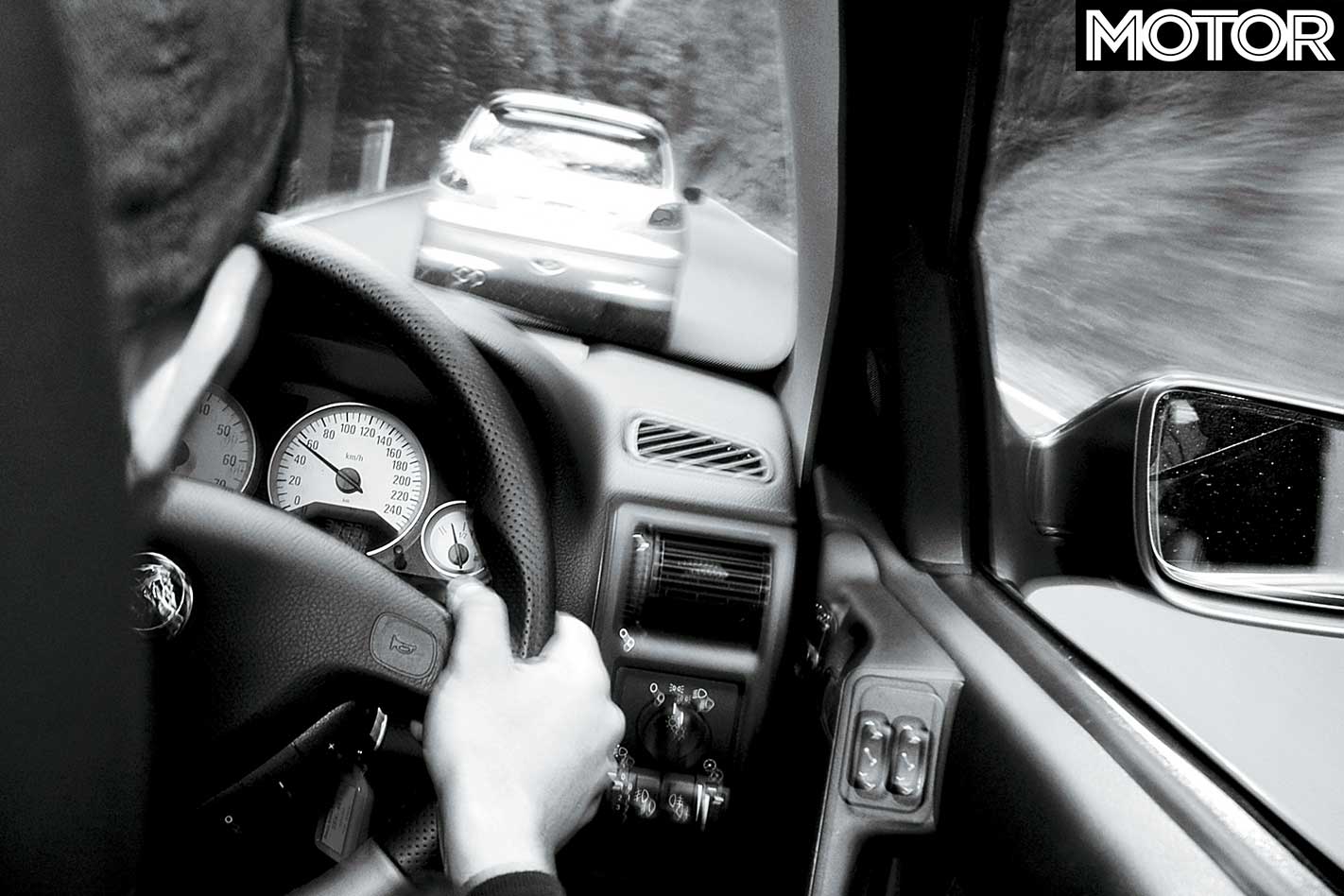
The GTi 180’s sporting credentials are backed up in the cabin by a pair of terrific alcantara-faced front seats that are unusually big and firm for a French car, with substantial side bolsters that come in handy, given the amount of lateral grip this car can generate.
However, the 206 puts itself at an immediate disadvantage with a driving position that is fundamentally flawed – pedals too close and steering wheel too far away. It simply never feels right to me. And it’s disappointing to find that quality hasn’t improved any – the switchgear is all pretty cheap and nasty, while the driver’s door release surround on our test car was falling out and a piece of trim on the tailgate came away in our hands when we grabbed it instead of the hatch release.
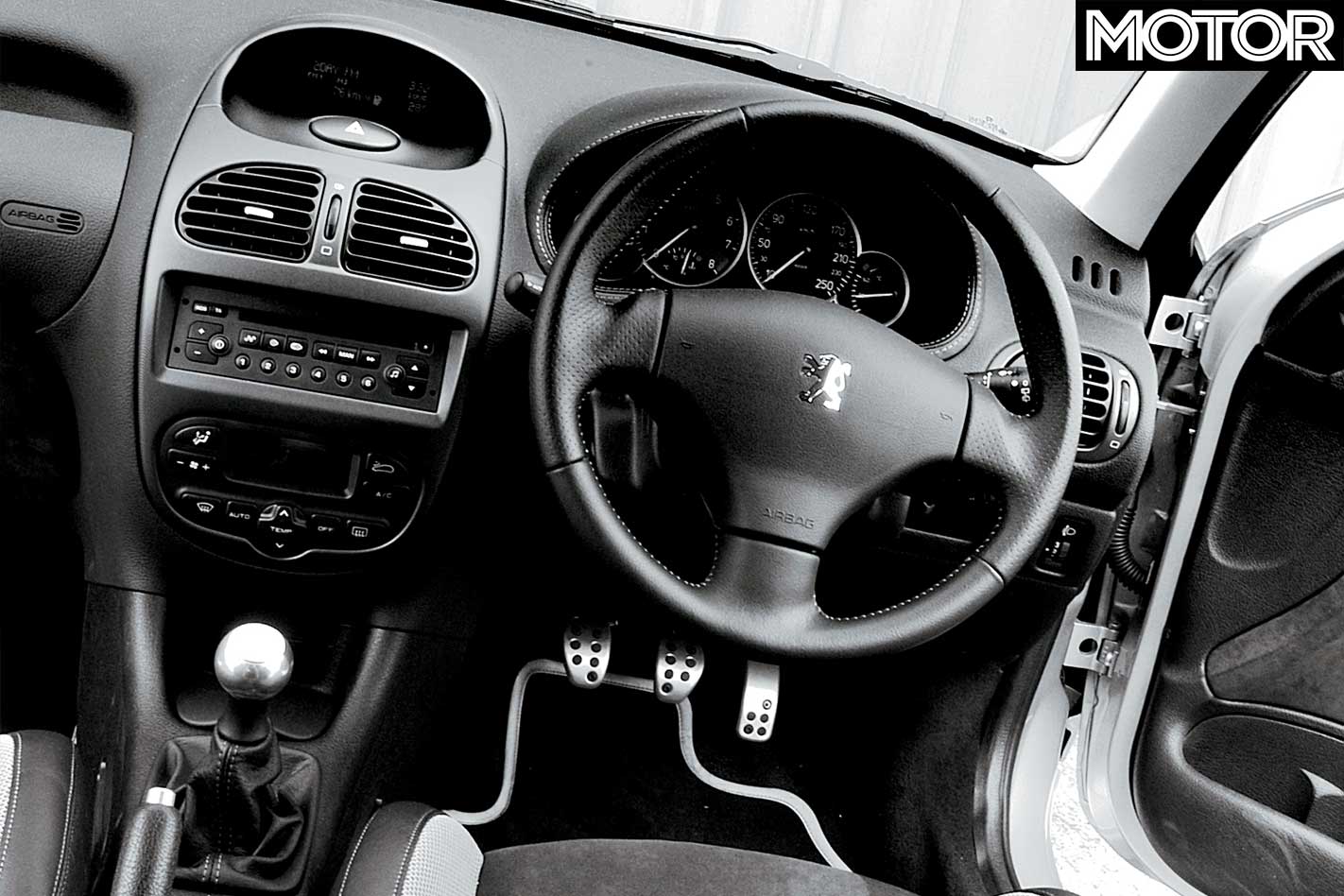
Oh yes, and why the hell can’t Peugeot turn the wiper blades around for right-hand drive, so they clear the driver’s side properly? And don’t even get me started on the automatic wiper function…
The Astra might be a little dour inside compared with the 206, but its full leather-covered seats are no less supportive than the Peugeot’s racy-looking jobs and probably more comfortable over long distances, while its more natural driving position and greater seat/wheel adjustability earn it major brownie points in my book.
Unless you happen to be of French persuasion, the Astra is going to be a far nicer car to live with day to day, because its rear seats are more usable than the 206’s sculpted-for-two affair and its boot is usefully bigger. The fact that it’s noticeably better screwed together doesn’t do its cause any harm, either, even though its switchgear looks and feels as if it came straight out of a 1980s-vintage Cavalier.
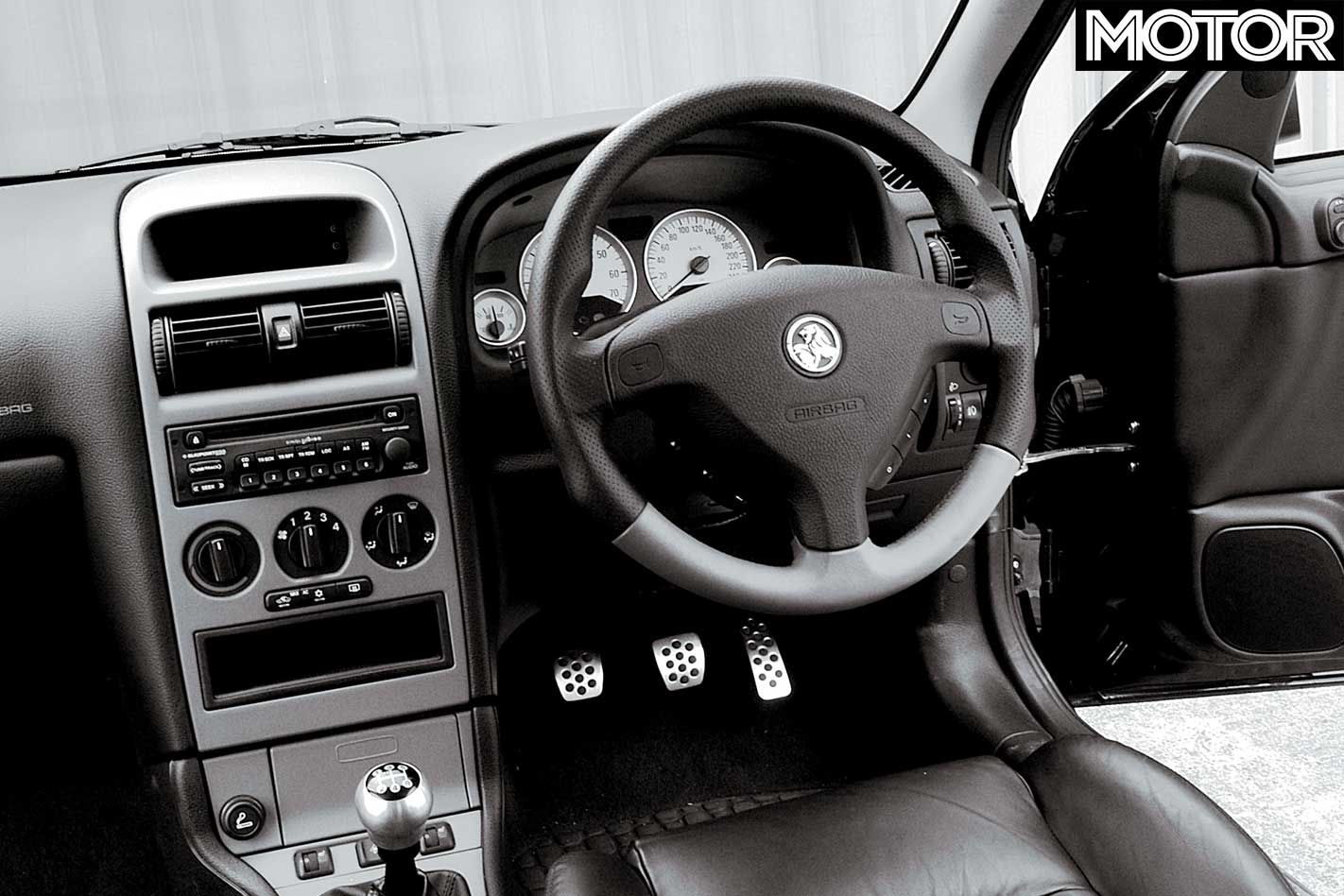
Being the bunch of revheads that we are, it’s tempting to give the nod to the 206 in this comparo for its feistiness and its bordering-on-brilliant handling. After the lukewarm effort of the 100kW GTi, the GTi 180 comes a lot closer to meeting our expectations of a Peugeot hot hatch, and it’s a better sorted car than the Clio Sport (the suspension tune of which isn’t exactly pintpoint).
On top of all that, it represents undeniably good value at $34,990 – just five large more than the regular GTi and a couple of grand less than the $36,990 Astra Turbo.
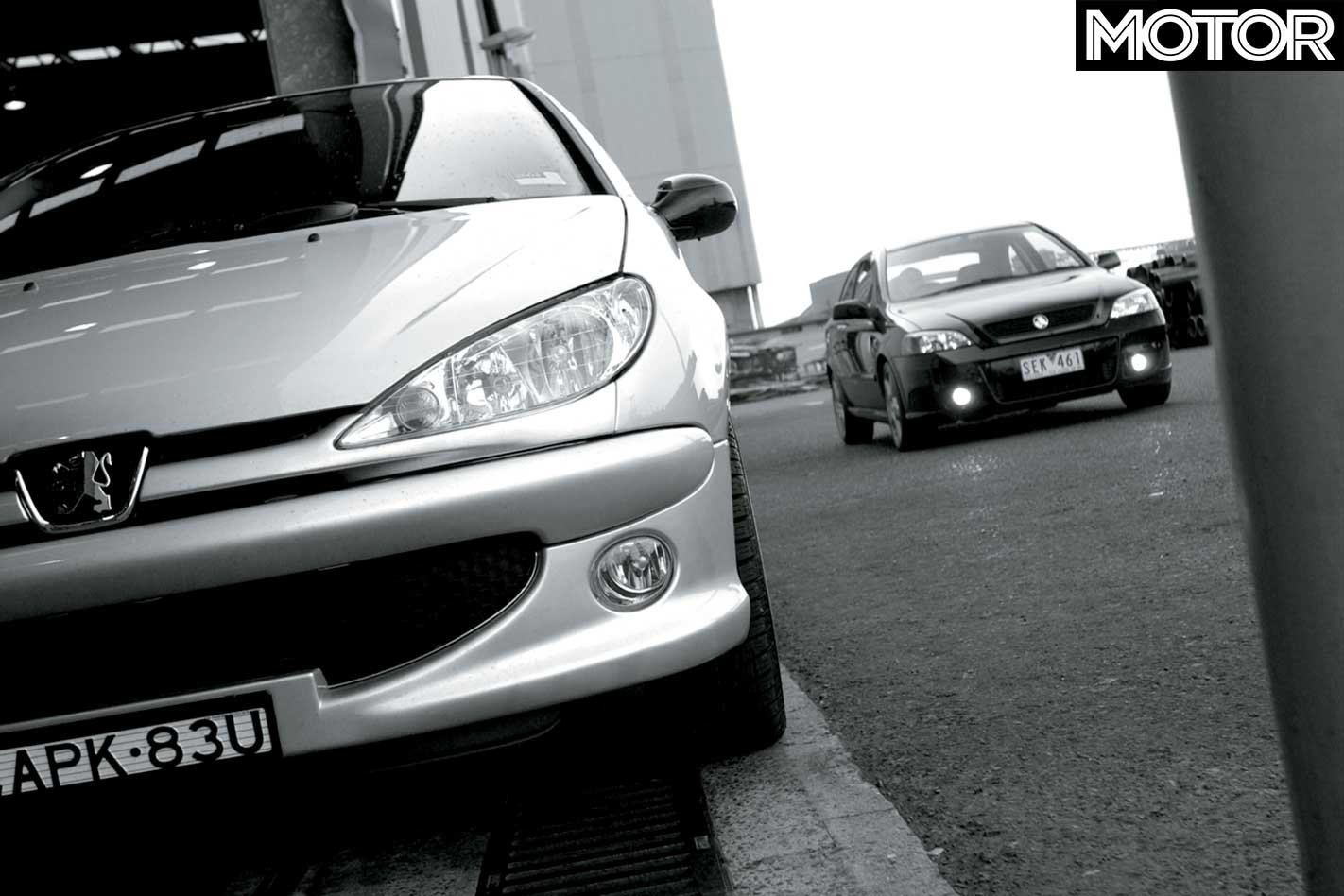
But we have to admit that the Pug is still frustratingly riddled with flaws. Yes, on the right road there’s more entertainment to be found here than in the Holden – but the turbocharged Astra is still the prudent choice, the complete package.
Not quite as stimulating, perhaps, but massively competent across the board and not in any danger of pissing you off half the time, like the Peugeot does. Not for nothing is the Astra our Bang For Your Bucks champ. Even against its hottest competition yet, the Astra Turbo is still the small car to beat.
Fast Facts
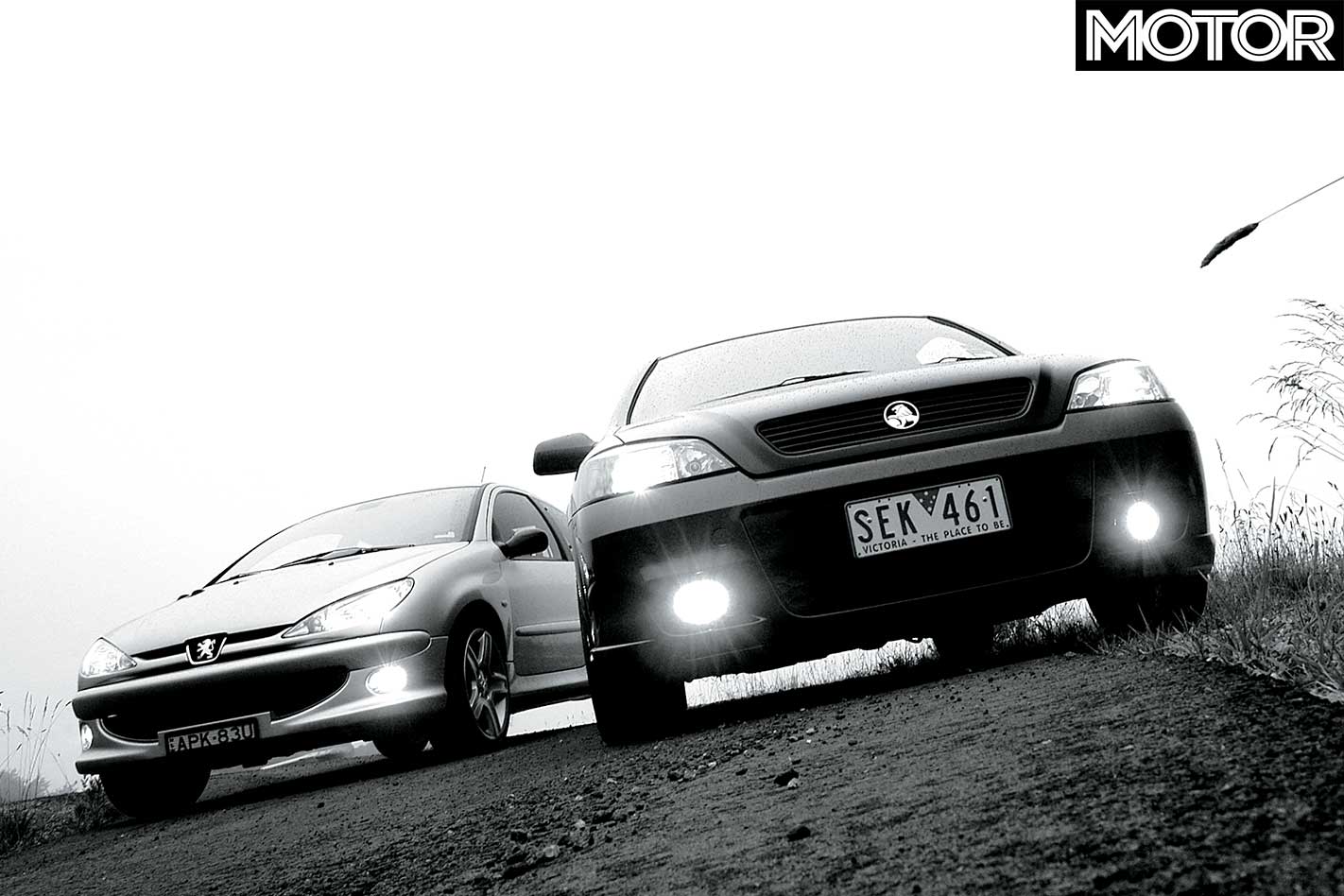
| u00a0 | 2004 Peugeot 206 GTi 180 | 2004 Holden Astra SRi Turbo |
| BODY | three-door hatchback | three-door hatchback |
| DRIVE | front-wheel | front-wheel |
| ENGINE | front-mounted 2.0-litre DOHC 16-valve four | front-mounted 2.0-litre DOHC 16-valve turbo four |
| BORE/STROKE | 85.0mm x 88.0mm | u00a086.0mm x 86.0mm |
| COMPRESSION | 11.0:1 | u00a08.8:1 |
| POWER | 130kW @ 7000rpm | 147kW @ 5600rpm |
| TORQUE | 202Nm @ 4750rpm | u00a0250Nm @ 1950-5600rpm |
| WEIGHT | 1100kg | 1282kgu00a0 |
| POWER/WEIGHT | 118kW/tonne | 115kW/tonneu00a0 |
| TRANSMISSION | five-speed manual | five-speed manual |
| SUSPENSION (f) | MacPherson struts, coil springs, anti-roll bar | MacPherson struts, coil springs, anti-roll bar |
| SUSPENSION (r) | trailing arms/torsion bars, coil springs, anti-roll bar | torsion beam, coil springs, anti-roll bar |
| L/W/h | 3835/1673/1430mm | u00a04110/1709/1425mm |
| WHEELBASE | 2442mm | 2606mm |
| TRACK | 1437mm (f); 1428mm (r) | 1467mm (f); 1456mm (r) |
| BRAKES (f) | 283mm ventilated discs,u00a0single-piston calipers | 308mm ventilated discs,u00a0single-piston calipers |
| BRAKES (r) | 247mm solid discs,u00a0single-piston calipers | 264mm solid discs,u00a0single-piston calipers |
| WHEELS | 17 x 7.0-inch (f & r), alloy | 17 x 7.5-inch (f & r), alloy |
| TYRES | Pirelli P7000, 205/40 ZR17 (f & r) | Dunlop SP Sport 8000E, 215/40 ZR17 (f & r) |
| FUEL | 50 litres, PULP | 52 litres, PULP |
| PRICE | $34,990 | $36,990 |
Speedster Kills
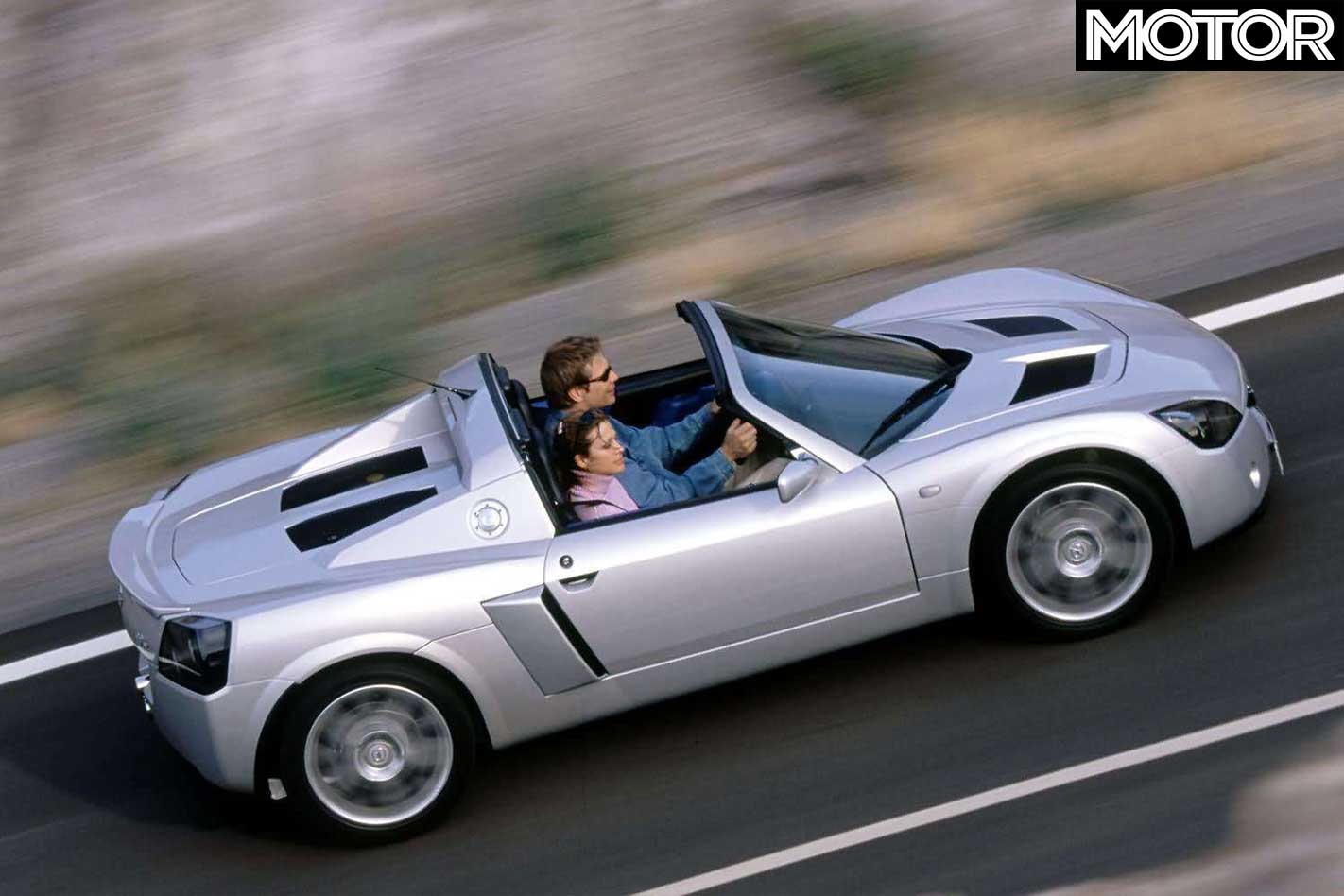
That GM 2.0-litre turbo motor has been used to stunning effect in a number of Vauxhall/Opel models overseas, even turning the Zafira MPV into a hotrod, but nowhere is its presence more keenly felt than in the Opel Speedster.
This is the car, remember, that is nothing less than a Lotus Elise in a sharp new set of clothes, so it doesn’t take a genius to work out that it’s going to be a rocketship with the Astra’s 147kW/250Nm powerpack mounted amidships in the lightweight aluminium chassis. A 0-100km/h time of 4.5sec is impressive enough, but it’s the fact that you can surge along on a wave of torque that makes the Speedster so different in nature from the thrashy Elise.
Given its supercar performance, a relatively modest price of around $70,000 (in Europe) means that, in terms of bang for your buck, the Speedster Turbo is possibly even more of a star than the Astra. Only problem is the Euros can’t get their heads around an Opel being so damned fast…
Fast Figures
| u00a0 | u00a0Peugeot 206 GTi 180 | Holden Astra SRi Turbo |
| 0-50km/h | 2.99sec | 2.66sec |
| 0-100km/h | 7.67sec | 7.23sec |
| 0-130km/h | 11.67sec | 11.33sec |
| 0-400m | 15.61sec @ 147.0km/h | 15.22sec @ 150.3km/h |
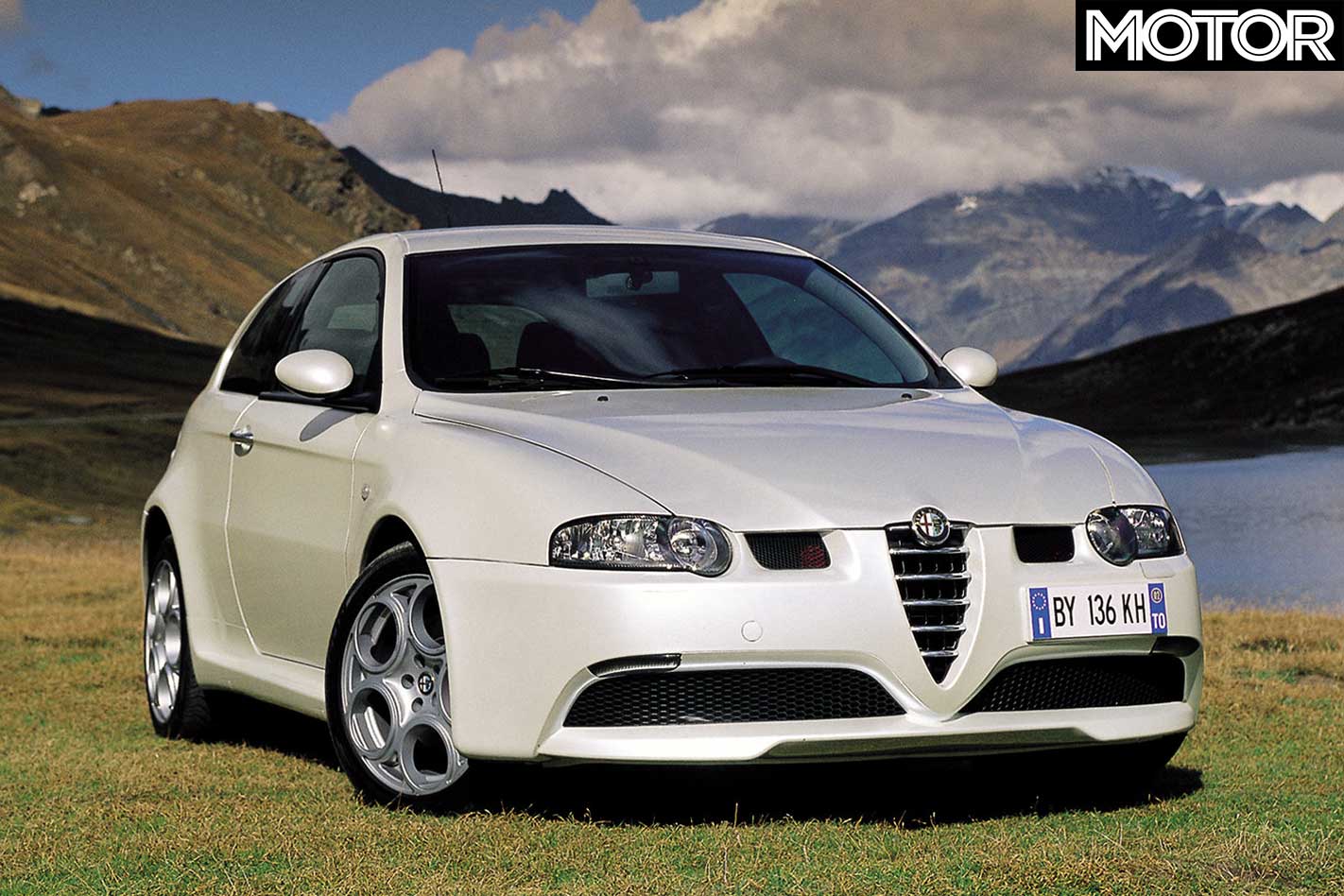
Five other power-packed pocket rockets – Alfa Romeo 147 GTA – 184kW V6 stuffed into pretty 147. Nice one – Renault Megane Sport – 2.0-litre turbo promises 168kW – VW Golf R32 – last of the Mk IVs, with 177kW 3.2-litre V6 – MINI Cooper S Works – officially tuned to 147kW – Audi S3 – 165kW as it stands, and next one’s a V6…
Heart Transplant

Back in the November 2003 issue we ran a news item saying that BMW is planning to use Peugeot engines to power the MINI. Now that we’ve driven the 206 GTi 180 on home turf, we’d have to say that the prospect of this engine in the sweet-handling MINI is mouth-watering.
The MINI’s currently lumbered with wheezy, rev-shy 1.6-litre engines designed by Chrysler and built in Mexico. Ditching these in favour of the 100kW and 130kW 2.0-litre Pug GTi engines for the Cooper and Cooper S would bring a significant step up in both performance and driveability.
At a single stroke, the move would solve the MINI’s main deficiency and turn it into a little hotrod. Then all BMW would have to do is soften the rear suspension a tad to make it work on Australian roads and we’d be happy.
Although the Peugeot tie-up is at least a year away from bearing fruit, it also opens the MINI up to the possibility of receiving one of the best small diesels in the world.



